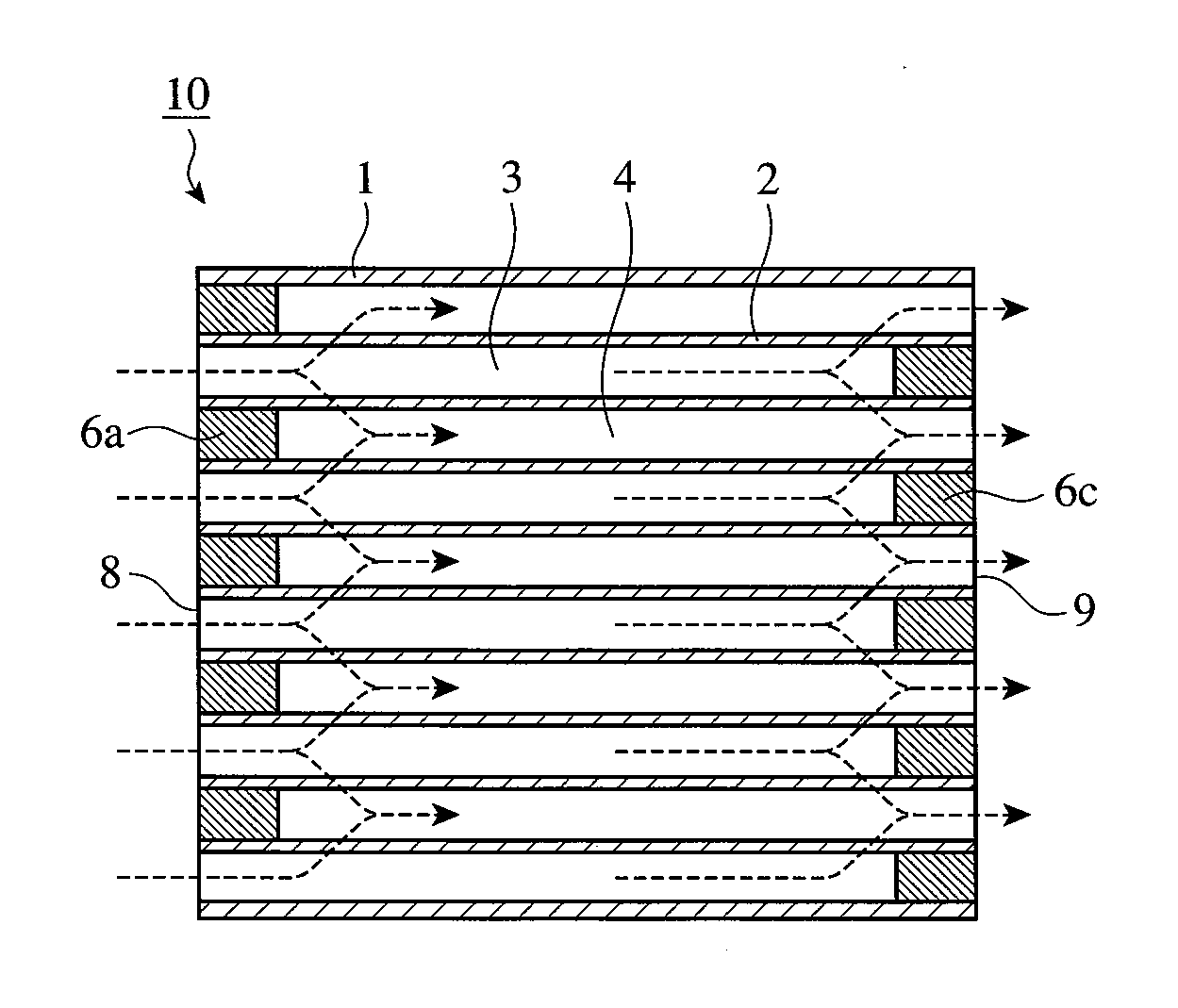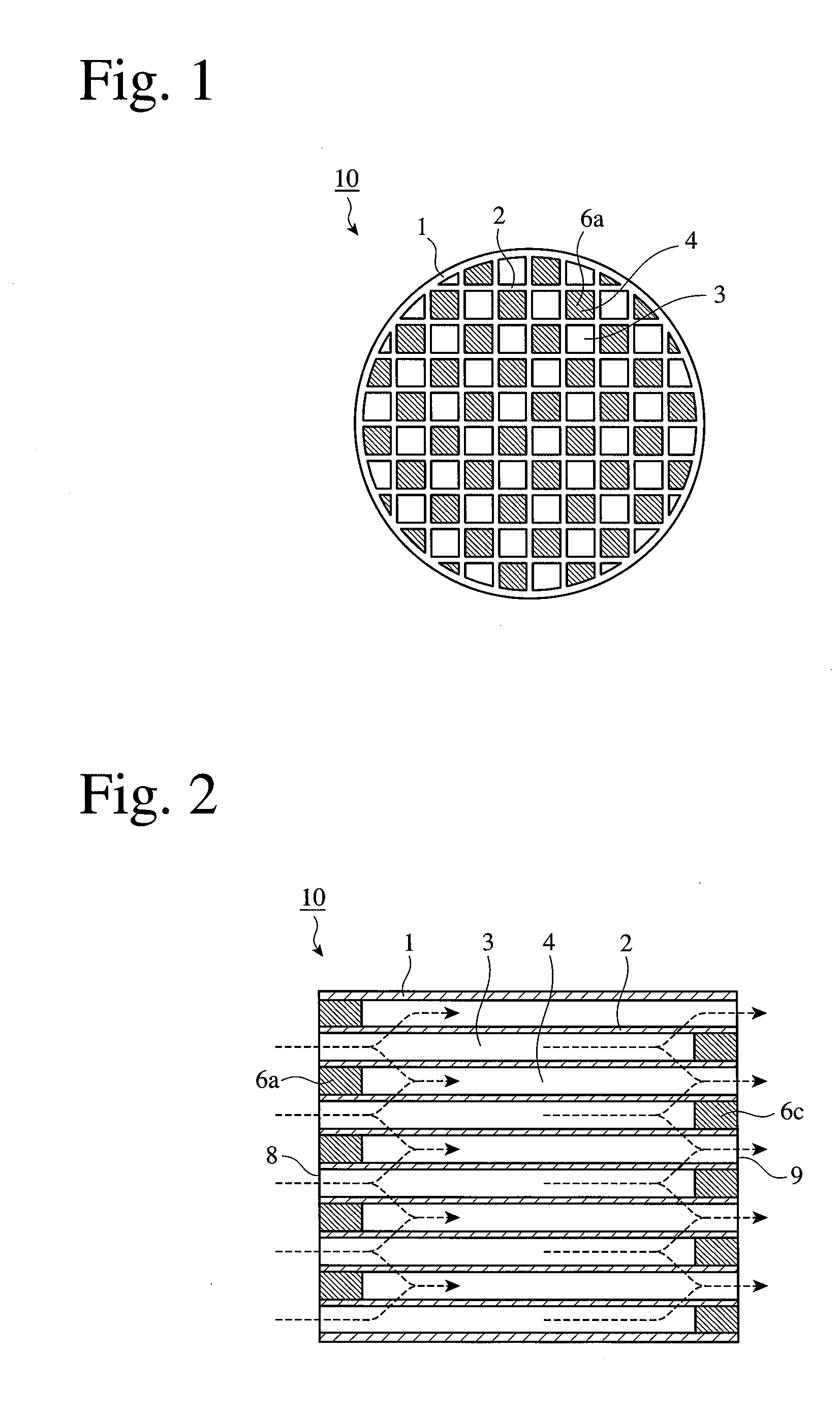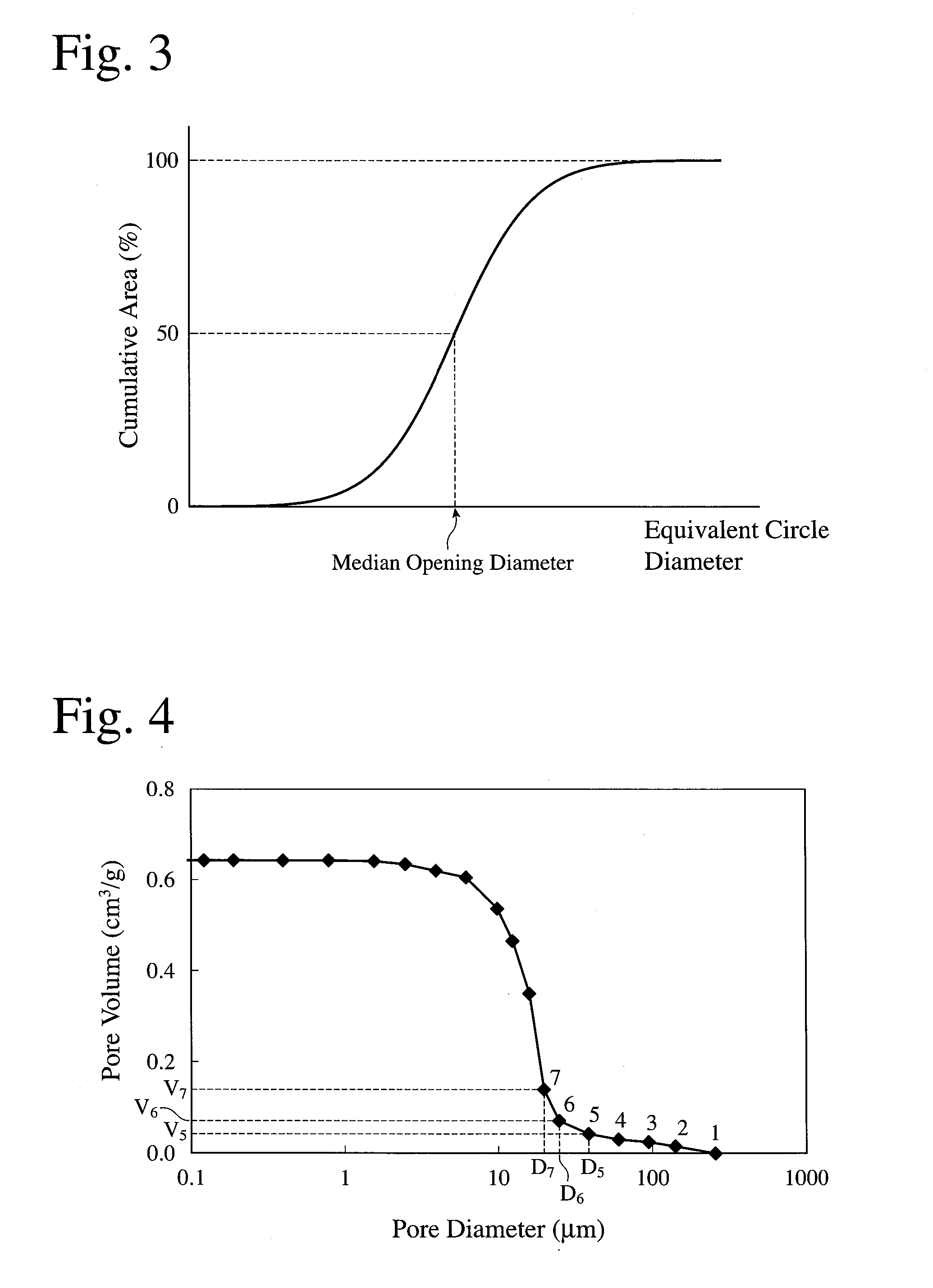Ceramic honeycomb structure and its production method
- Summary
- Abstract
- Description
- Claims
- Application Information
AI Technical Summary
Benefits of technology
Problems solved by technology
Method used
Image
Examples
example 25
[0118]32.0 parts by mass of titania powder having a median diameter of 1.6 μm, 56.1 parts by mass of alumina powder having a median diameter of 5 μm, 3.0 parts by mass of silica powder having a median diameter of 20 μm, and 3.0 parts by mass of magnesia powder having a median diameter of 2 μm as ceramic material powders having an aluminum titanate composition, a molding aid, and 7.0 parts by mass of titanium-oxide-coated, hollow resin particles having a median diameter of 20 μm and sphericity of 0.92 as a pore-forming material were mixed, blended, and extruded to obtain a honeycomb structure molding having an outer diameter of 50 mm, a length of 90 mm, a cell wall thickness of 10 mil (0.25 mm), and a cell density of 300 cpsi (46.5 cells / cm2). After drying, the molding was machined to remove its peripheral portions, and sintered by a schedule comprising temperature elevation at a heating speed of 50° C. / hour from room temperature to 150° C., at a heating speed of 10° C. / hour from 150...
PUM
| Property | Measurement | Unit |
|---|---|---|
| Temperature | aaaaa | aaaaa |
| Temperature | aaaaa | aaaaa |
| Length | aaaaa | aaaaa |
Abstract
Description
Claims
Application Information
 Login to View More
Login to View More - R&D
- Intellectual Property
- Life Sciences
- Materials
- Tech Scout
- Unparalleled Data Quality
- Higher Quality Content
- 60% Fewer Hallucinations
Browse by: Latest US Patents, China's latest patents, Technical Efficacy Thesaurus, Application Domain, Technology Topic, Popular Technical Reports.
© 2025 PatSnap. All rights reserved.Legal|Privacy policy|Modern Slavery Act Transparency Statement|Sitemap|About US| Contact US: help@patsnap.com



